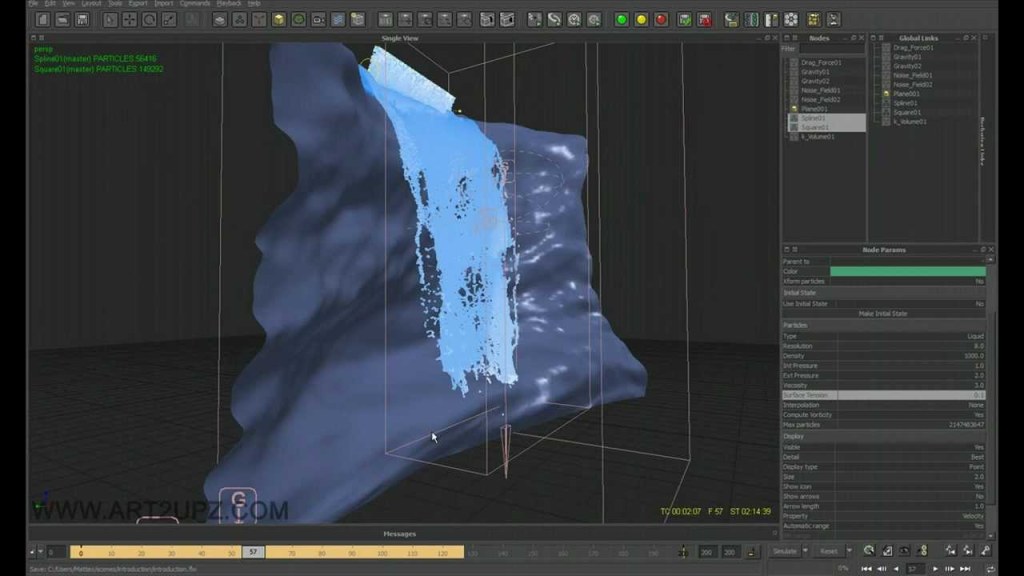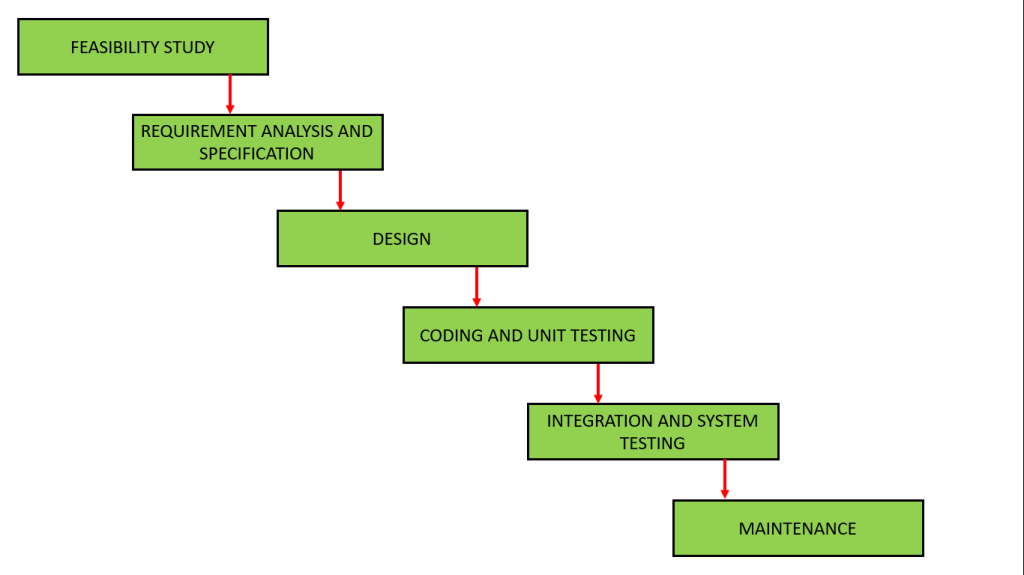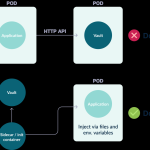Master The Software Waterfall Process With Our Ultimate Tutorial
Software Waterfall Tutorial: A Comprehensive Guide
Dear Readers,
Welcome to our comprehensive guide on software waterfall tutorial. In this article, we will provide you with a detailed explanation of the waterfall model in software development and its step-by-step process. Whether you are a beginner or an experienced professional, this tutorial will help you understand the fundamentals of the waterfall methodology and how it can be applied in your projects.
2 Picture Gallery: Master The Software Waterfall Process With Our Ultimate Tutorial


Introduction
The waterfall model is a sequential software development process that follows a linear and rigid approach. It consists of distinct phases, where each phase must be completed before moving on to the next. This methodology is widely used in various industries, including software engineering, construction, and manufacturing.
The main objective of the waterfall model is to ensure a systematic and structured approach to software development. It provides a clear framework for project planning, requirements gathering, design, coding, testing, and deployment. By following the waterfall model, organizations can minimize risks and ensure the quality and timely delivery of their software projects.
Now, let’s dive into the key aspects of the software waterfall tutorial:
What is the Waterfall Model?

Image Source: ytimg.com
The waterfall model is a linear and sequential software development methodology. It consists of several distinct phases, including requirements gathering, system design, implementation, testing, deployment, and maintenance. Each phase has specific objectives and deliverables, and they are carried out in a sequential manner.
The waterfall model follows a top-down approach, where the requirements are defined at the beginning and flow downwards through the different phases. Once a phase is completed, there is no going back, and changes can only be incorporated in the subsequent phases.
Requirements Gathering
During this phase, the project team identifies and documents the software requirements based on the client’s needs and expectations. This involves gathering information, conducting interviews, and analyzing existing systems to define the scope of the project.
System Design
In the system design phase, the software architecture and high-level design are developed. This includes defining the system components, data structures, interfaces, and algorithms. The system design serves as a blueprint for the development team to implement the software.
Implementation
In the implementation phase, the software is developed based on the requirements and design specifications. The coding, unit testing, and integration testing are performed during this phase. The output of this phase is a working software product that meets the defined requirements.
Testing

Image Source: geeksforgeeks.org
The testing phase involves verifying and validating the software against the specified requirements. Various testing techniques, such as functional testing, performance testing, and regression testing, are employed to ensure the quality and reliability of the software.
Deployment
Once the software is fully tested and approved, it is deployed to the production environment. This includes installing the software on the client’s systems, configuring it, and providing user training and support. The deployment phase marks the completion of the development process.
Maintenance
The maintenance phase involves addressing any issues or bugs discovered after the software is deployed. It includes providing updates, patches, and enhancements to ensure the continued performance and functionality of the software.
Advantages and Disadvantages of the Waterfall Model
Like any software development methodology, the waterfall model has its advantages and disadvantages. Let’s explore them in detail:
Advantages
1️⃣ Clear and well-structured process: The waterfall model provides a clear framework with defined phases, making it easier to plan and manage projects.
2️⃣ Easy to understand and implement: The linear and sequential nature of the waterfall model makes it easy to understand and implement, especially for beginners.
3️⃣ Well-suited for small projects with fixed requirements: The waterfall model is ideal for projects with well-defined and stable requirements, where changes are less likely to occur.
4️⃣ Early detection of issues: Each phase has defined deliverables and reviews, allowing early detection and resolution of issues.
5️⃣ Clear documentation: The waterfall model emphasizes documentation, ensuring that all requirements, design decisions, and test cases are properly documented.
Disadvantages
1️⃣ Lack of flexibility: The rigid and sequential nature of the waterfall model makes it difficult to accommodate changes or incorporate feedback from stakeholders.
2️⃣ Limited stakeholder involvement: Stakeholders have limited opportunities for input and review, as most decisions are made during the early phases.
3️⃣ Slow feedback loop: Since testing occurs towards the end of the development process, any issues or bugs discovered may require significant rework and delays.
4️⃣ Inefficient for complex and evolving projects: The waterfall model is not suitable for projects with evolving requirements or complex dependencies, as it lacks iterative and adaptive elements.
5️⃣ High risk: Any flaws or errors in the early stages can have cascading effects on the subsequent phases, leading to delays and increased costs.
Frequently Asked Questions (FAQs)
Q1: Is the waterfall model suitable for Agile projects?
A1: No, the waterfall model is not suitable for Agile projects. Agile methodologies, such as Scrum or Kanban, emphasize iterative development, frequent feedback, and continuous improvement, which are not supported by the waterfall model.
Q2: Can the waterfall model be used for large-scale projects?
A2: Yes, the waterfall model can be used for large-scale projects with well-defined and stable requirements. However, it is important to consider the risks associated with limited stakeholder involvement and the potential impact of changes.
Q3: Can the waterfall model be combined with other methodologies?
A3: Yes, the waterfall model can be combined with other methodologies, such as the V-model or the spiral model, to address specific project requirements. This hybrid approach allows for flexibility while maintaining the structured nature of the waterfall model.
Q4: What are the alternatives to the waterfall model?
A4: Some popular alternatives to the waterfall model include Agile methodologies (Scrum, Kanban), iterative models (Spiral, V-model), and hybrid approaches (Agile-Waterfall). The choice of methodology depends on the project’s requirements, constraints, and team dynamics.
Q5: Is the waterfall model still relevant in today’s fast-paced software industry?
A5: While Agile methodologies have gained popularity in recent years, the waterfall model still has its place in certain projects and industries. It can be particularly useful for projects with fixed requirements, strict deadlines, and regulatory compliance.
Conclusion
In conclusion, the software waterfall tutorial provides a structured and sequential approach to software development. It offers a clear framework for project planning, requirements gathering, design, coding, testing, deployment, and maintenance. While the waterfall model has its advantages and disadvantages, it remains a valuable methodology in certain contexts. Understanding the waterfall model and its pros and cons can help you make informed decisions when choosing the right software development approach for your projects.
We hope you found this tutorial informative and insightful. If you have any further questions or need assistance, please feel free to reach out to us.
Best regards,
Your Software Development Team
Final Remarks
The information provided in this article is for educational purposes only. The software waterfall tutorial may vary depending on the specific project requirements and organizational processes. It is important to adapt and tailor the methodology to suit your individual needs. We do not guarantee any specific outcomes or results based on the implementation of the waterfall model. Please consult with a professional software development team for personalized advice and guidance.
This post topic: Software Tutorials

